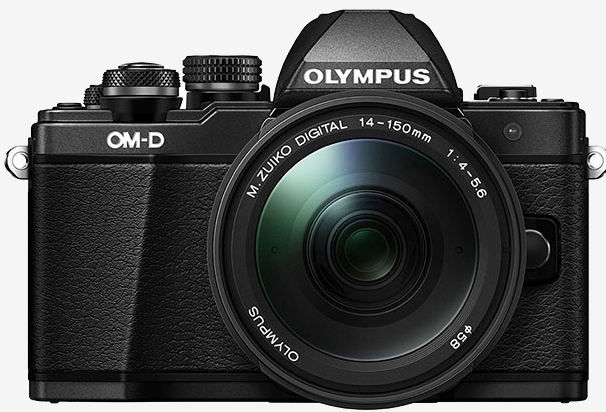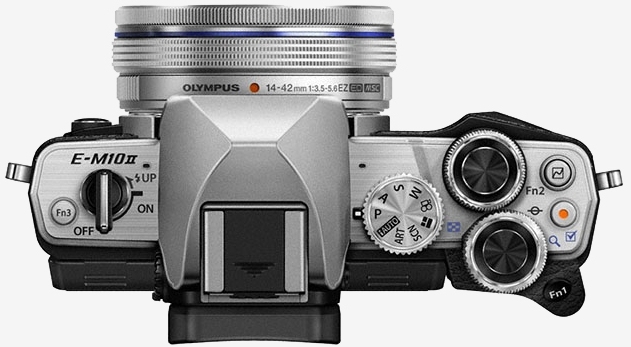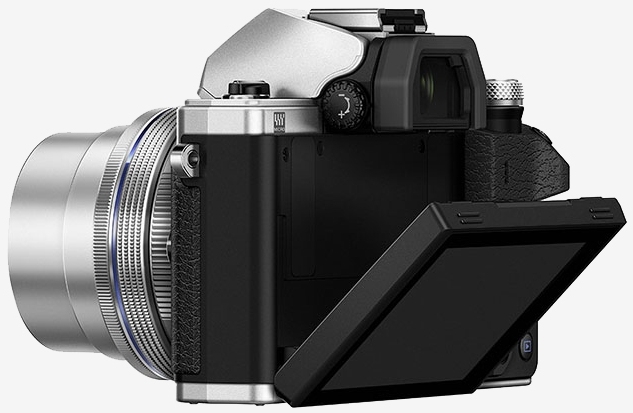Olympus launched a revised version of its OM-D E-M5 mirrorless camera earlier this year and now, it’s the OM-D E-M10’s turn. The second-generation entry-level mirrorless camera, fitting called the OM-D E-M10 Mark II, features classic styling with the addition of Olympus’ renowned five-axis image stabilization system for improved low-light performance.
Those familiar with the original will immediately notice that some of the dials on the top of the camera have been repositioned. Specifically, the mode dial is now on the right side, all dials are now taller and each one has its own unique grip so users can better distinguish them by feel.

The power switch has also been relocated to the top left side where the old mode dial was.
Internally, the Mark II uses the same 16-megapixel Live MOS sensor and TruePic VII image processor found in its predecessor. What is new, however, is the aforementioned five-axis stabilization – a feature found on the more expensive E-M5 and E-M1 models (the previous model used a three-axis system).
Having had some hands-on time with the E-M1, I can certainly vouch for the stabilization system the E-M10 Mark II has inherited. Even with my shaky hands, I’ve been able to shoot tack-sharp images handheld at shutter speeds as slow as 1/5 second (I’ve even seen some pull off similar feats at 1.6 seconds).
Other noteworthy features include an AF Targeting Pad which lets you keep your eye on the viewfinder as you trace your thumb on the rear touchscreen to adjust focus points, 8.5 frames per second burst shooting, Wi-Fi wireless control, a 3-inch tilting touchscreen, a larger electronic viewfinder and a silent mode that makes use of an electronic shutter.
It’s worth noting that unlike the OM-D E-M5 Mark II and the E-M1, the new E-M10 isn’t weatherproof. The camera does feature an integrated pop-up flash although you can add your own (or other accessory like a wireless trigger or speedlight) using the hot shoe.
Panasonic and Olympus first announced the micro four thirds standard in August 2008 as an alternative to traditional DSLRs and the standard four thirds system. Its smaller sensor size allows for more compact and lighter camera bodies at more affordable price points, traits that are also passed along to compatible lenses.

The platform got off to a somewhat slow start in terms of native glass, an issue that has worked itself out over time. Whether you’re after a macro, portrait, super zoom, pancake prime or a multi-purpose lens, there are multiple options for virtually any budget.
The small sensor size, while great for the aforementioned reasons, is also the platform’s biggest weakness. While it’s more than adequate for the overwhelming majority of users including advanced amateurs, most working professionals will no doubt stick with full-frame DSLRs due to their unmatched image quality and vast selection of lenses.

The OM-D E-M10 Mark II will be available starting next month in your choice of all-black or black and silver color schemes with an MSRP of $650 for just the body. Olympus also plans to offer a bundle that includes a 14-42mm EZ lens.
https://www.techspot.com/news/61884-olympus-unveils-om-d-e-m10-mark-ii.html